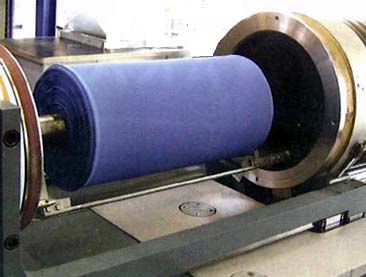Examples are shown in Q.4. The most typical example is dyeing.In February 2012, NIKE, Inc., a global sports footwear company, announced that it wanted to promote the use of supercritical CO2 anhydrous dyeing technology throughout the industry “to benefit both athletes and the global environment”. Then, in August 2012, ADIDAS AG of Germany announced a technology called DryDye and declared its commitment to environmental contribution. It announced, “Worldwide, water equivalent to seawater in the Mediterranean Sea was consumed for dyeing in two years, but with Drydye, 1,250 tons of water was saved by dyeing 50,000 T-shirts this summer. In Japan, research on supercritical dyeing technology has been conducted since the late 1990s, led by the University of Fukui.
When supercritical carbon dioxide dissolves in an organic polymer material, it causes swelling and plasticization (i.e., relaxes the entanglement of polymer chains, promotes their mobility, and increases their free volume). For example, polycarbonate (PC) is generally considered an amorphous polymer, but up-hill diffusion by spinodal decomposition of PC and carbon dioxide is thought to induce PC crystallization. These features can be used to dye polyester fibers and other materials that were previously considered difficult to dye with zero wastewater.

Effects of carbon dioxide on polymers
- Decrease in Tg
- Decrease in viscosity
- Decrease in surface tension
- Increase in diffusion coefficient
- Facilitation of crystallization
